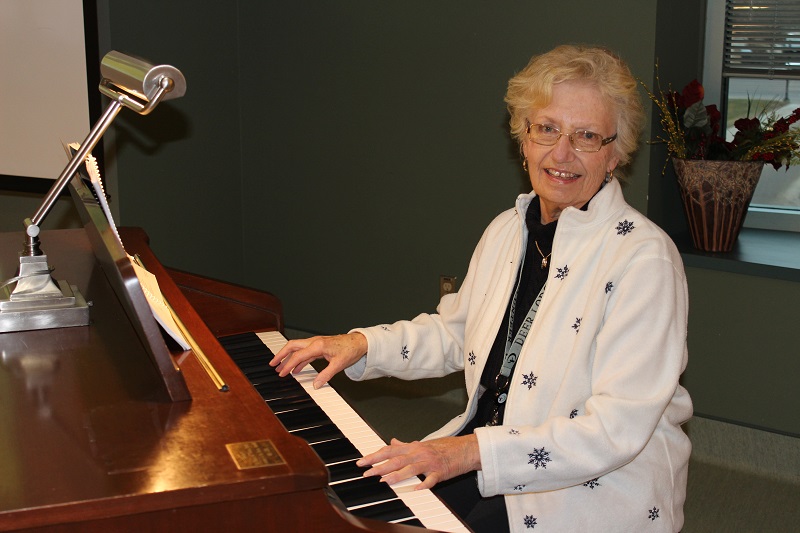
Installing gyms on Deer Lodge Centre’s geriatric rehabilitation units has improved quality of care for patients and families, and boosted collaboration between healthcare teams.
By Ryan McBride
At Deer Lodge Centre, we bring the gym to you.
That’s the basic idea behind recent changes to how Deer Lodge provides physio and occupational therapy to patients on its geriatric rehab units.
Beginning in January, Lodge 2 and Lodge 4 opened small satellite gyms—two per each lodge, at either end of both inpatient units, which serve people recovering from illness or injury who are expected to return home after discharge.
The decision to open physical rehab spaces on the actual units was prompted by the expansion of Deer Lodge’s geriatric rehab services from 66 to 88 beds in 2018.
“We saw this as an opportunity to provide geriatric rehab in a more efficient and collaborative way, while reducing the length of stay for our patients,” says Janet Clark, Deer Lodge’s Chief Allied Health Officer. Before, patients would have been transported by wheelchair down to the Centre’s main floor physio department and gymnasium for their appointment, then taken back up to their unit. That time is now better spent on their rehabilitation (although some patients still visit the main floor physio department for specialized equipment only available there).
One benefit of this new approach has been stronger communication between nursing and medical unit staff and Allied Health partners, such as physiotherapists and occupational therapists who now provide therapy on the unit alongside each other and the unit staff, says Sheena Warkentin, Manager of Rehabilitation Services.
“Our unit staff see what’s involved in physio first hand, and our rehab staff see how patients function on the unit. This is better because the unit offers an environment closer to what most patients will return home to, with walls and furniture, compared to the wide-open space down in our gym.”
According to Lynne Williment, Manager of Patient Care for Lodge 4, stronger communication has led to greater collaboration between staff from different disciplines, all the way from health care aids to physicians, who now take a team-like approach to ensuring every aspect of a patient’s care is being met.
The new approach has also opened the door to more direct working relationships with families of patients, “who can ask us questions and get answers without having to set up appointments or wait around for a call to be transferred,” Warkentin adds.
Providing rehab directly on the unit helps families recognize that therapy is an ongoing process that impacts countless daily activities, from walking around to preparing a meal. This insight can, in turn, help patients and families assess the challenges a patient might face after discharge from Deer Lodge’s care—whether they go to a private home, an assisted living facility, or a personal care home.
“They might see that an option which wasn’t appealing before, like assisted living, might actually provide more support and, ultimately, freedom,” says Lori Krysko, Manager of Patient Care for Lodge 2. “Or it might reassure them that they’ll be able to keep going safely in their own home.”
All three managers say several families have praised the holistic approach Deer Lodge takes to caring for their loved ones. But it’s the patients who benefit the most. Lori and Lynne have both observed patients become more outgoing as they undertake their rehab journey on their units. “Sometimes even when it’s not their regular physio time, I’ll see someone using the arm bike, for example, to show how much they’ve improved,” says Lori.
Ultimately, adds Lynne, “when people go home, it’s because they’re ready. And now, they’re more likely to be ready sooner.”
Recent News

Winnipeg Jets Parkinson’s Disease Awareness Game!

Volunteer Profile: Carole Grier

